Who is the Salisbury Giant?
It’s this guy!!!
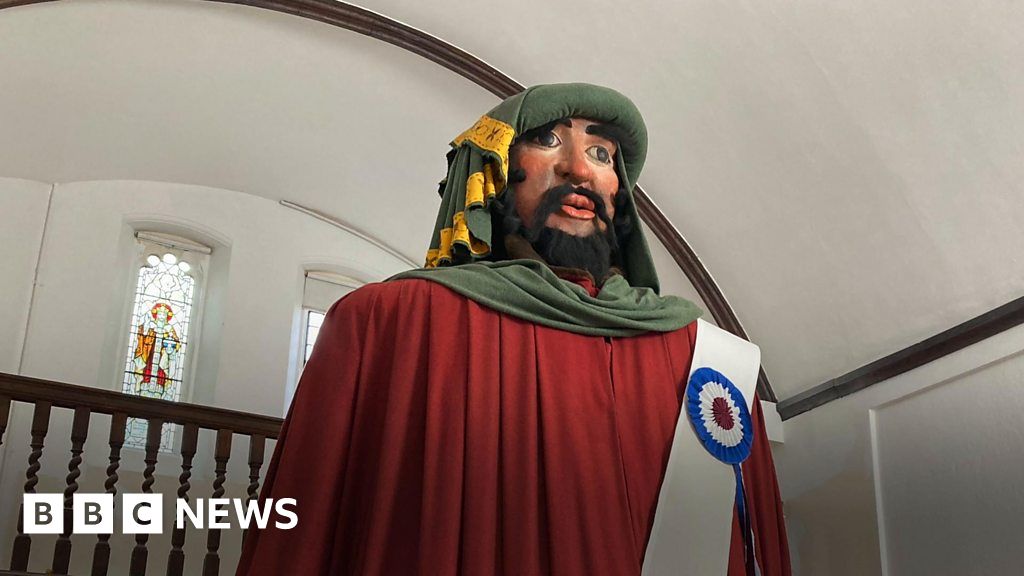
I’ve been told I bring an air of whimsy to the function, and I believe that comes from my Salisbury upbringing!!
Salisbury is a small city in the South West(ish) of England. In my opinion it shouldn’t really be considered a city, but it is because Salisbury Cathedral exists.
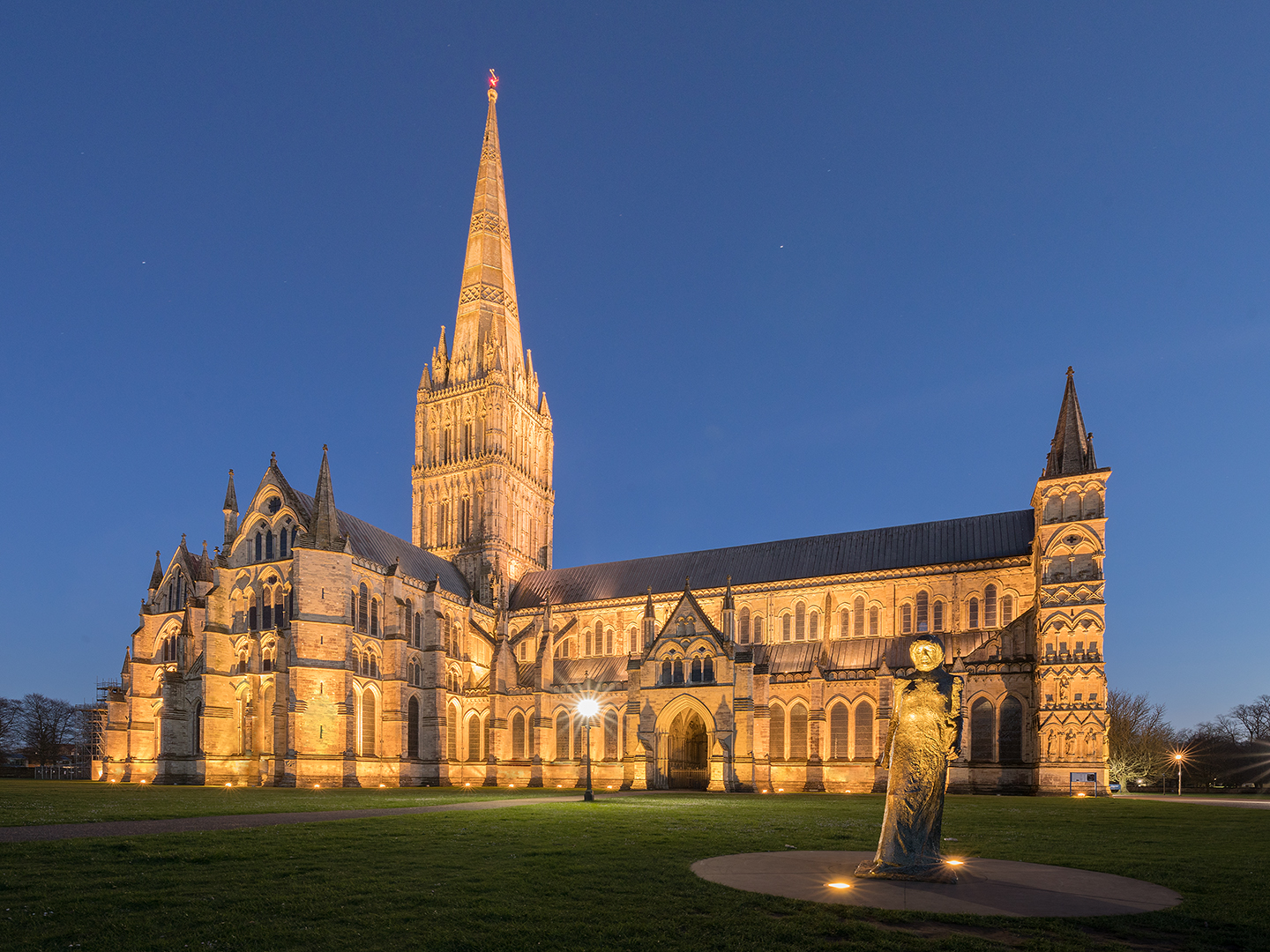
There’s so much odd Historical content littered around. But more than just the number of Historical monuments, there’s a sense of connectedness to Salisbury’s history. A “narrative” path can be built, from Stone Henge and Old Sarum all the way to Salisbury Cathedral and Clarendon Castle.
I’ve internalised a kind of mental map, linking all the locations from my upbringing. When I walk around Salisbury, even though I don’t historically know the “true” link between the locations, I vividly feel their interdependence.
Stone Henge
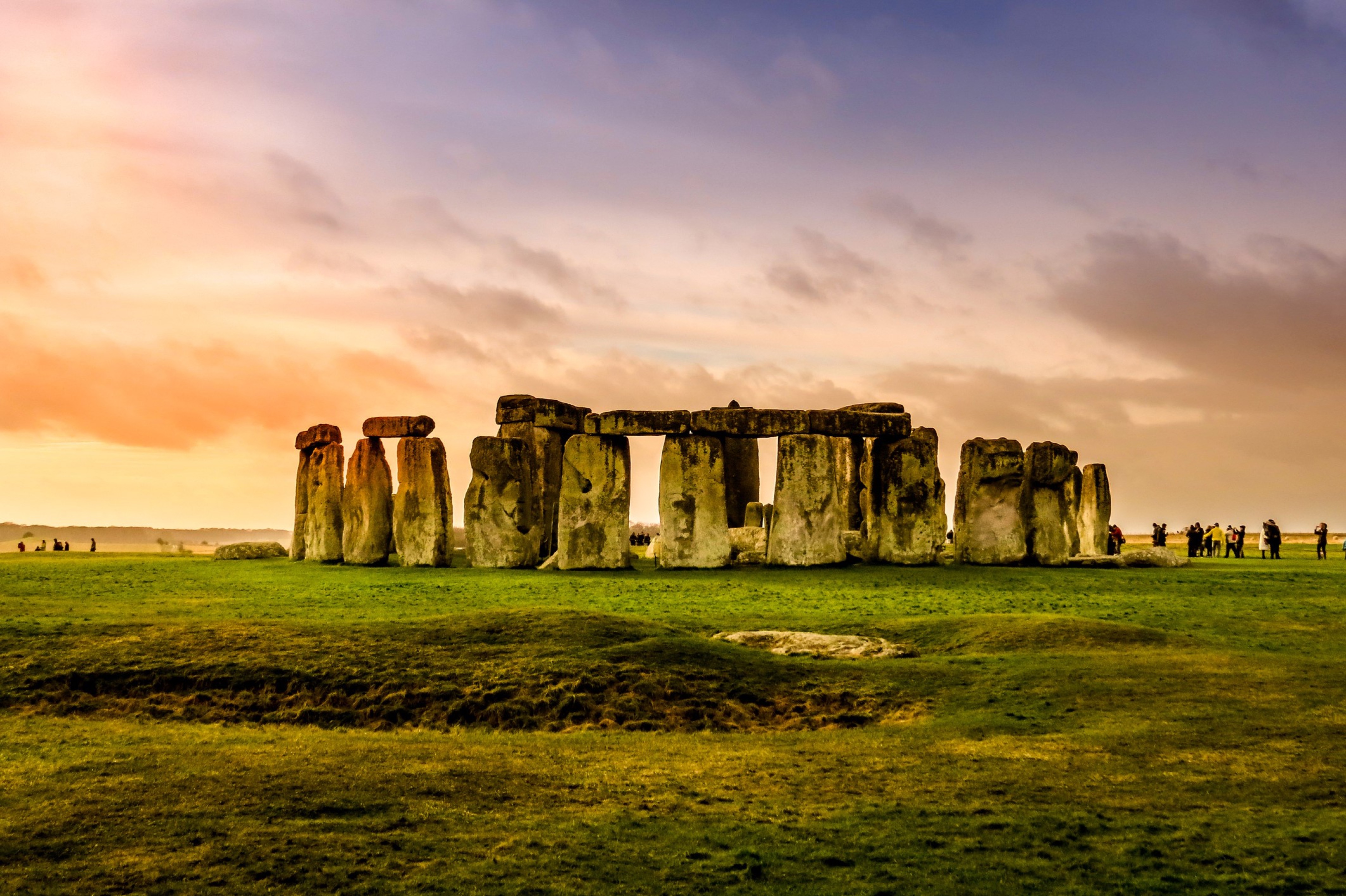
Although Stone Henge is in Amesbury, I still claim it for Salisbury. For me I associate “Stone Henge” with the tour buses that wizz around Salisbury.

People flock to stone henge at the solstice. Some religious modern Druids come out too. There’s Arthur Pendragon, an independent candidate for the constituency that Salisbury is contained in. He’s a modern day Druid who claims to be a reincarnation of King Arthur. I’m not an expert, but as far as I know little is noted on the customs of the original Druids. The Druid’s that appear today are a modern kind, and have a greater connection with the modern West and Christianity - that wouldn’t have been present when Stone Henge was first formed.
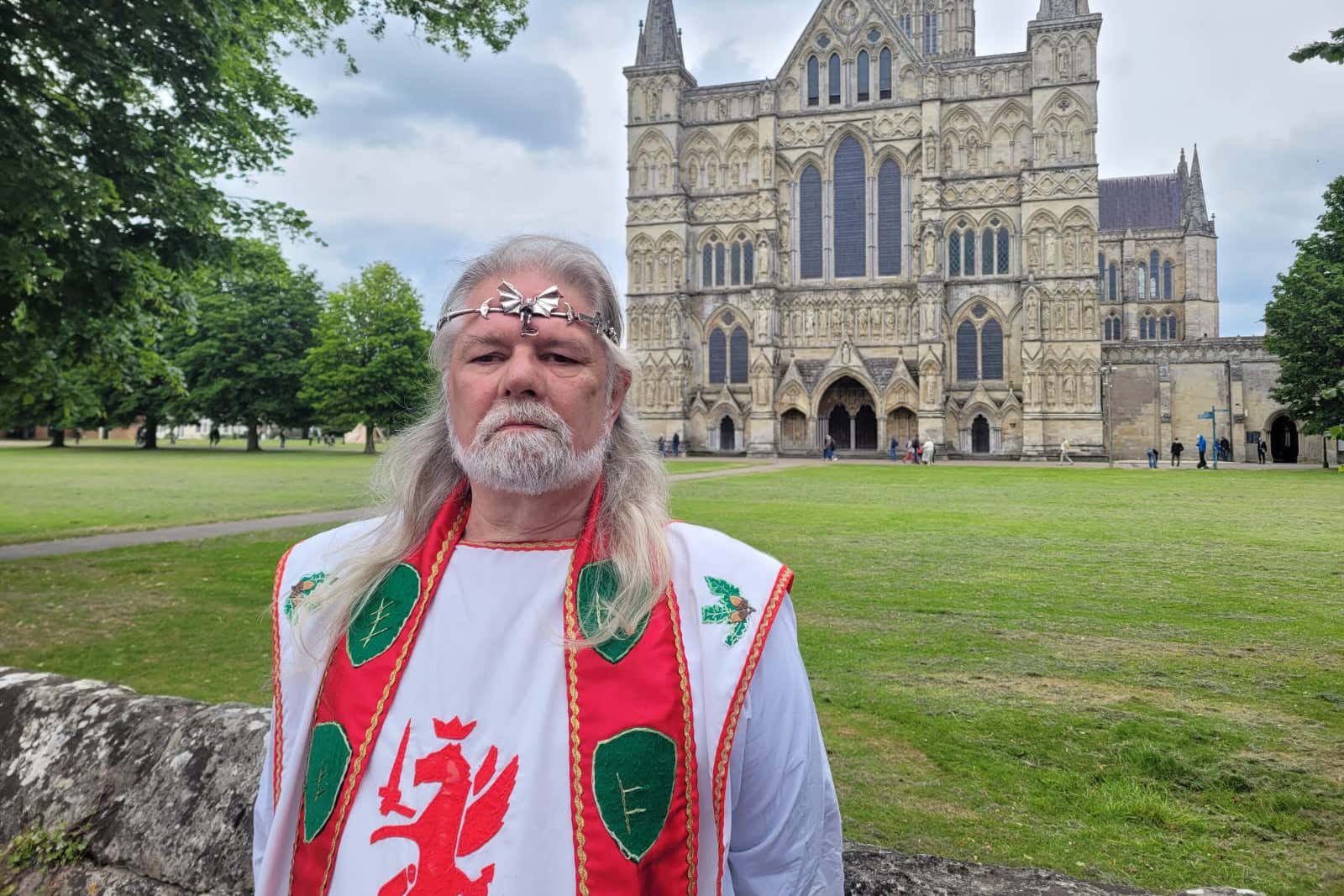
Stone Henge’s origins are ambiguous, part clock - related to the sun, part spiritual monument or possibly a funeral site? One amazing thing about Stone Henge is that it wasn’t all erected at the same time. Some of the stones are older than others. There were several construction phases, spanning at least 1500 years. Stone Henge predates other, now ruined, settlements around Salisbury such as Old Sarum and Clarendon Castle. Ancient visitors of Stone Henge from those settlements, would have been just as unsure on its purpose/origins as us now - but even crazier, ancient creators/menders of Stone Henge could have all had different understandings of its significance.
Imagine you’re part of phase 1 putting Stone Henge together, back in 3100 BC. Wow super cool. Then you die. THEN 1000 years later, your great-great-great-great-great-great-great-great….-great-great descendent is working on Stone Henge 3 - and they move the rock you painstakingly rolled up the hill - and your descendent is probably rationalising it with completely different customs to you.
The example above is exaggerated, but I just find it insane that the same confusion I have for it, my ancestors were probably equally confused like 5000 years ago. Stone Henge wasn’t “Stone Henge” when the first rock was placed there.
My tendency is to try make sense of Stone Henge by imagining the original purpose of it. That is the modern approach: the most common theory is that it was a clock to track the solstice. But it’s more complex than that. We recognise that there were iterations on Stone Henge for 1500 years. In 2500 BC, I wonder how much appreciation there was for it as an already ‘ancient’ monument at that point. Stones were moved around and new ones brought in. Today we see the most modern incarnation of Stone Henge.
Stone Henge has been legally protected since 1882, and socially anyone who interferes with it faces serious backlash - think Just Stop Oil recently. We have made small adjustments (e.g. straightening out one of the stones in the 1950s), but we wouldn’t ‘alter’ Stone Henge.
For most of us, we don’t want to use Stone Henge for its original purpose. The modern day Druids who connect with it on the Summer Solstice may be attempting to, but the majority of others who come visit to appreciate the culture - just to see it.
There’s been no direct adjustments to Stone Henge today - but it has still grown. When I see the Green Salisbury buses, it reminds me that Stone Henge still reels us in. Salisbury feels like a mini solar system, the gravitational pulls of different historical hubs all in balance.
Salisbury Cathedral
Inside the Cathedral, it’s echoey. The ceiling reaches so high that even when inundated with visitors - the cathedral is still quiet, their voices all get smushed together - trapped in a cacophony above. There’s marble underfoot in the central nave, cold marble. The cold inside isn’t oppressive or harsh, its a peaceful kind of cold, a pacifying kind. Quiet and cold.
Despite it happening frequently, I can’t say I have strong memories of bells ringing out from Salisbury Cathedral. I do have strong memories of the mechanical clock stored in the cathedral though. The ‘Salisbury Cathedral Clock’ is a preserved example of the earliest type of mechanical clock - it was originally used in a Cathedral clock tower that was demolished, it is no longer used - but it stands on display as a working example of the earliest kind of mechanical clock. Just 10 miles away from Stone Henge, potentially an ancient non-mechanical clock.
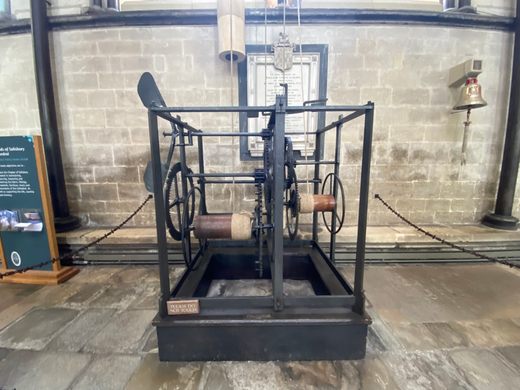
I find the Salisbury Cathedral Clock eerie. Originally it was employed, actually used as a clock, but now it’s just there stood on display in a frame. Such an alive object, now so sterile. A strange modern evolution of Stone Henge.
I am unsure if this is a myth, but there’s a story from Old Sarum - which isn’t far from Stone Henge - on the origin of Salisbury Cathedral. Supposedly an arrow was shot from the top of Old Sarum, and the location it landed was where Salisbury Cathedral was built.
There’s that path - from Stone Henge, to Old Sarum, to Salisbury Cathedral. And in that an evolution from propping up rocks to take advantage of the sun, to melding steel for an early mechanical clock.
I associate Salisbury Cathedral largely with my Grandma (now passed). Born in 1939 she would mention how Salisbury had changed while growing up. Salisbury wasn’t affected by bombing during WW2 – I remember my Grandma mentioning how the ‘iron works’ or ‘gas works’ were targetted, but other than that Salisbury was bomb free!!
One reason for Salisbury not being bombed during WW2 is supposedly because Hitler intended to be crowned there if he won the War. The Cathedral was like a protective bubble, one started at Stone Henge and passed over from Old Sarum.
Salisbury Museum
Across the close from Salisbury Cathedral (across the outside green) is the Salisbury Museum. I went recently and enjoyed it for the most part. Very ominous memories associated with it from my childhood. It’s just a museum full of knicknacks from around the Salisbury / Wiltshire area, I remember it vividly as dim and foreboding.
It’s all inside a large manor house. Rustic tudor like interiror with white walls. I went recently and it was largely compact, I remembered it being far more winding. Maybe they rearranged it, or maybe it’s just that everything feels bigger when you’re little.
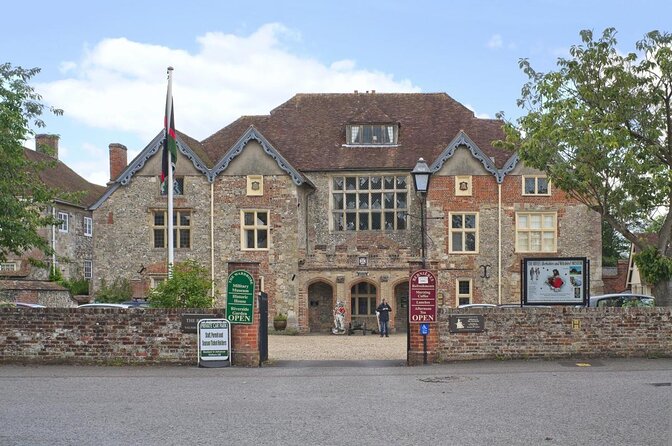
TW: –> Description of STUFFED ANIMALS below - you can skip to next heading.
Now the museum is lit up, well displayed. Very modern looking. Reminiscent of musems like V&A, London History Museum. I recall dark rooms, filled with shadowy stuffed animals and waxy recreated figures.
When I was little, Dolly the Sheep was there. A cloned sheep who after death was stuffed and then put on display in Salisbury Museum? Felt wild when I was a child. Closest thing I had experienced to having stuffed trophy animals.Dolly wasn’t there on my last visit!! Probably for the best. Her eyes were the weirdest part. Deeply unalive, and sheep eyes are already hollow.
Salisbury Giant
The jewel of the Salisbury Museum from my childhood visits was the room housing the Salisbury Giant and his companion Hobnob. They’re an inscrutable pair.
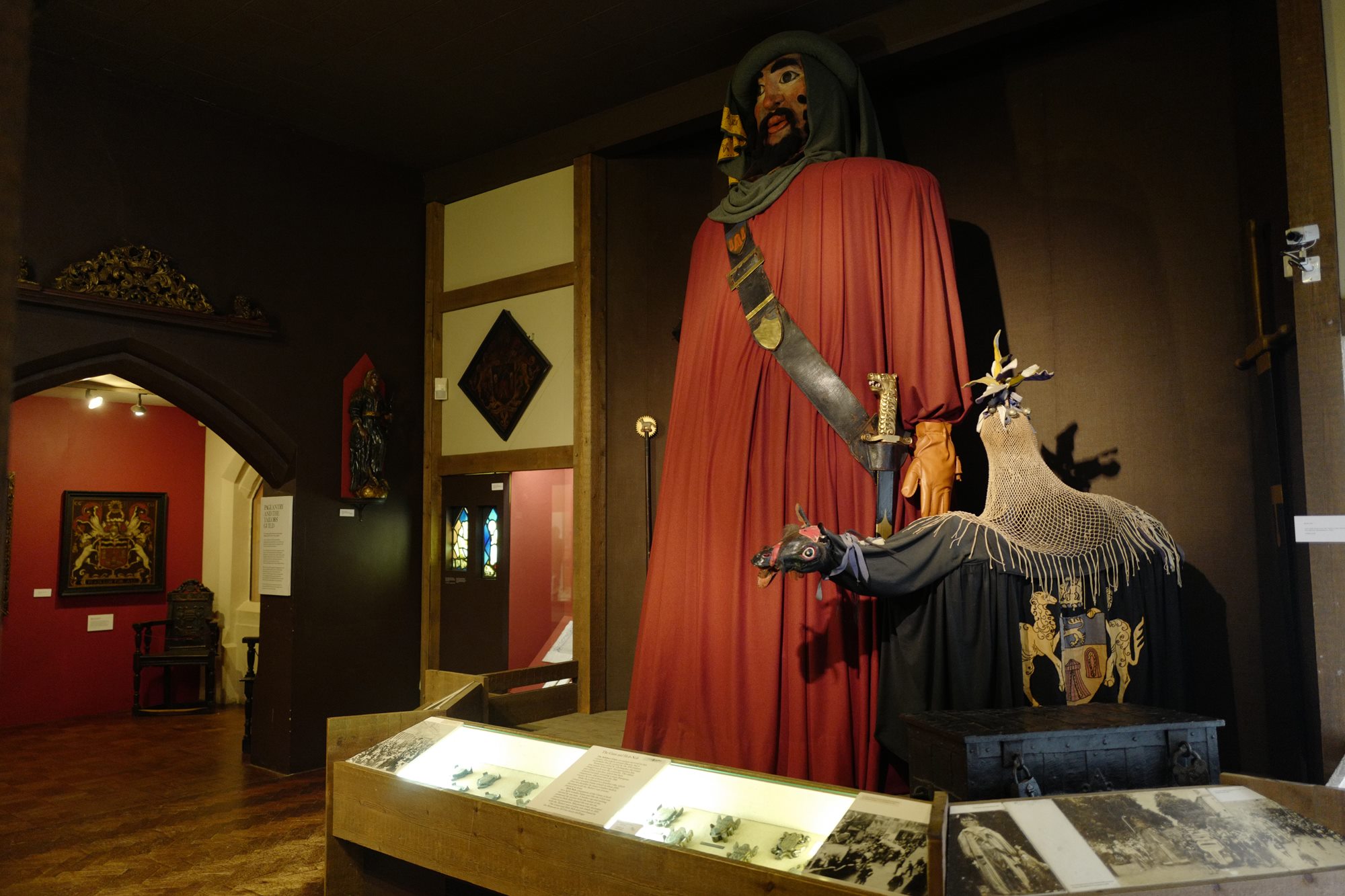
The Salisbury Giant is a large 12 foot “giant” made of wicker, wood, cloth who used to be parading around on special festival days. He’s supposed to represent a medieval soldier/warrior. From my brief research he is supposed to based on Saint Christopher? Hobnob is his camel companion. Why is Hobnob black? Why is he a camel? I don’t know!!!
So odd. Today his skin is white, but from old photos it looks dark. His look has visibly changed over time, his outfit/paint has worn down, props have been changed. At first I thought he’d been white faced, but I think that’s just the colour fading away?
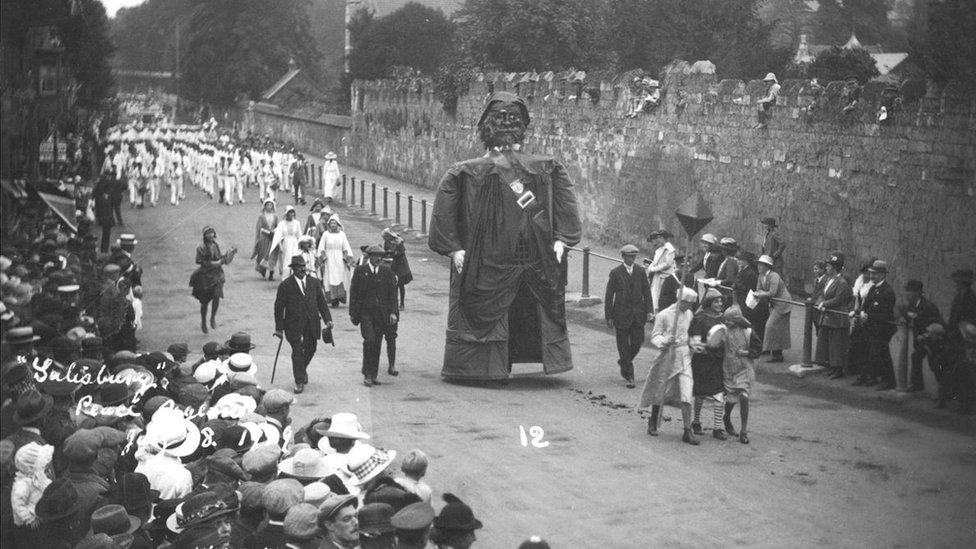
He’s kind of the ‘spirit’ of Salisbury. Was he ever modelled on the physique of someone? Who? Why? He towered over me when I first encountered him. Today he’s less intimidating, but no less confounding.
The Salisbury giant is not ‘real’, there’s no 12 foot guy hidden away in the corner of the Salisbury Museum with his camel Hobnob. But the power of the Salisbury Giant’s presence is very real. Like Stone Henge, the Salisbury Giant has changed over time. His ‘purpose’ changed, now he’s just a reminder of our old tradition… largely relegated to resting in the museum.
When I saw him as a child, I felt the same sense of awe and fear that a child in the 1500s would’ve felt. That terrifying strength coarsing through them as the giant emerged from around the corner with a great medieval parade.
Feeling at Home
Visiting home is comforting and uncanny. The streets lie in the shadow of these historical giants. A looming ephemeral spire watching over the whole ‘city’, a pile of mystical stones drawing us in from a windy hilltop, a giant and his camel ruminating in the corner of a cryptic museum.
There’s so much world history, but also so much of my own. That existential reflection I have on Salisbury’s monuments stitched in with my own intimate, tender and sometimes sore personal memories - is hard to process. I try to recall that just as I walk these streets feeling small under the weight of human connectedness and my personal history, so did my ancestors 4000 years ago as they approached the ancient grey slabs of Stone Henge.
I believe Elisabeth Frink’s Walking Madonna, a statue placed outside the Salisbury Cathedral, captures this idea.
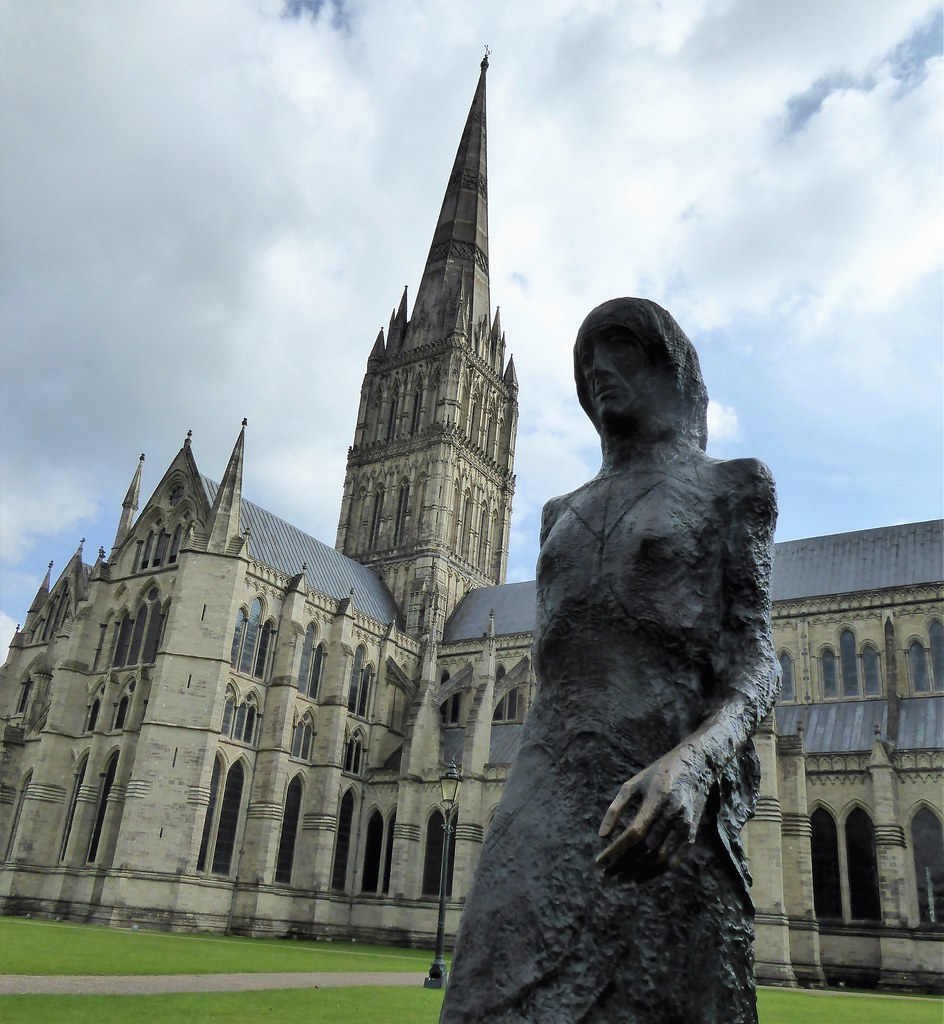
She is placed towards the entrance of the Cathedral, dwarfed by the triumphant scale of the Cathedral. Almost invisible. But still walking South defiant. A physical, worn reminder of all those who have been here before us.
Read More/See More
Thank you for reading!!! I don’t really have references… but here is a few soruces I did read from.
- Article on Elisabeth Frink Statue. This talks about the statue in relation to the might of the church.
- Youtube Video on Salisbury Giant
- Salisbury in 1962